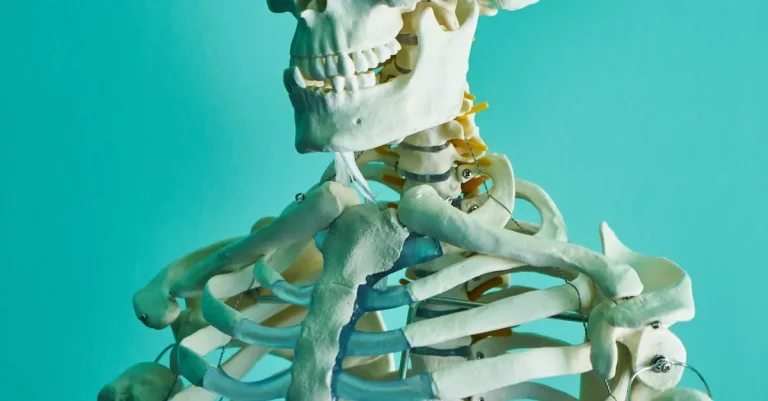What Is A Mortar And Pestle Used For In Science?
The mortar and pestle is a simple but powerful tool that has been used across cultures and scientific disciplines for thousands of years. This iconic duo continues to be ubiquitous in modern laboratories – but what exactly is it used for?
If you’re short on time, here’s a quick answer to your question: A mortar and pestle is used in science for efficiently grinding, crushing, and mixing solid chemicals and compounds.
Definition and Design of Mortar and Pestle
A mortar and pestle is a traditional tool used in various fields, including science, to grind and mix substances. It consists of two components: the mortar, which is a sturdy bowl, and the pestle, which is a blunt crushing tool.
The design and materials of mortar and pestle can vary, allowing them to be used for different purposes.
Mortar – Sturdy Bowl
The mortar is typically made of ceramic, stone, or metal and is shaped like a bowl. It is designed to be sturdy and has a wide, flat base to provide stability while grinding and mixing substances. The inside of the mortar is rough-textured, which helps in the grinding process by providing better friction between the substances being mixed.
Pestle – Blunt Crushing Tool
The pestle is a cylindrical tool with a rounded end. It is used to crush and grind substances in the mortar. The blunt end of the pestle allows for controlled crushing and grinding, ensuring that the substances are properly mixed and broken down.
The length and thickness of the pestle can vary depending on the size and design of the mortar.
Variations in Size, Material, and Style
Mortar and pestles come in various sizes, materials, and styles to suit different needs. In scientific laboratories, smaller mortars and pestles are often used for precise measurements and specific experiments.
Larger mortars and pestles are commonly used in industrial settings for larger-scale grinding and mixing.
Materials such as agate, porcelain, and stainless steel are commonly used for scientific purposes due to their durability and resistance to corrosion. However, in traditional medicine and cooking, materials like wood and stone are also popular choices for mortars and pestles.
It’s worth noting that the design and material of the mortar and pestle can influence the grinding efficiency and the final results. For example, a rough-textured ceramic mortar and pestle may be better suited for grinding spices, while a smooth stainless steel mortar and pestle may be ideal for crushing pills in a laboratory setting.
Key Uses in Science
Grinding Solids to Powders or Pastes
A mortar and pestle is a versatile tool used in many scientific disciplines, including chemistry, biology, and pharmacology. One of the primary uses of a mortar and pestle in science is grinding solids to powders or pastes.
This process is crucial for various applications like preparing samples for analysis, creating homogeneous mixtures, or reducing particle size for experiments. By exerting pressure and friction with the pestle, scientists can break down solid materials into finer particles, allowing for better reactivity and easier handling.
Mixing and Blending Chemicals
In addition to grinding, a mortar and pestle are also commonly used for mixing and blending chemicals. The rough surface of the mortar provides ideal conditions for effective and efficient mixing. Scientists can combine different substances, such as powders, liquids, or even small solid pieces, in the mortar and use the pestle to thoroughly blend them together.
This process ensures a uniform distribution of the components, promoting chemical reactions or creating new compounds.
Crushing up Solids for Extraction
Another important use of a mortar and pestle in science is crushing up solids for extraction purposes. During research or analysis, scientists often encounter solid materials that need to be broken down to extract specific compounds or substances of interest.
By using a mortar and pestle, researchers can crush the solid material, facilitating the extraction process. This method is particularly useful in fields such as forensic science, where evidence needs to be processed and analyzed.
Uses in Chemistry
Preparing Reagents and Compounds
A mortar and pestle is an essential tool in chemistry laboratories for preparing reagents and compounds. This traditional grinding tool allows scientists to grind solid materials into fine powders, which can then be used in various chemical reactions.
The mortar and pestle provide a controlled environment for grinding, ensuring that the resulting powder is of consistent particle size. This is especially important for experiments where precise measurements are required.
The use of a mortar and pestle also allows scientists to easily mix different powders together to create new compounds.
Improvising Small-Scale Reactions
In addition to preparing reagents and compounds, a mortar and pestle can also be used for small-scale reactions. Sometimes, scientists may need to carry out reactions on a very small scale, and using traditional lab equipment such as beakers and flasks may not be practical.
In these cases, a mortar and pestle can be used as a makeshift reaction vessel. The solid reactants can be ground together in the mortar, and a small amount of solvent can be added to initiate the reaction.
This allows scientists to carry out experiments quickly and efficiently without the need for specialized equipment.
Cleaning Lab Equipment
Another important use of a mortar and pestle in chemistry is for cleaning lab equipment. After conducting experiments, lab equipment such as glassware and test tubes can become contaminated with residues and reactants.
Using a mortar and pestle, scientists can grind cleaning agents such as detergents or solvents, and use the resulting paste to scrub away the contaminants. The abrasive action of the mortar and pestle helps to remove stubborn residues, ensuring that the lab equipment is thoroughly cleaned and ready for the next experiment.
For more information on the uses of a mortar and pestle in chemistry, you can visit https://pubs.acs.org/doi/10.1021/ed081p198. This authoritative source provides detailed insights into the various applications of a mortar and pestle in scientific research.
Uses in Biology and Healthcare
Plant Extractions and Homogenizing
In the field of biology, mortar and pestle are widely used for plant extractions and homogenizing. This traditional tool allows researchers to break down plant tissues and release their compounds for further analysis.
The mortar and pestle provide a gentle and efficient method for extracting bioactive compounds from plants, such as essential oils, alkaloids, and flavonoids. By grinding the plant material, the mortar and pestle help to rupture the plant cell walls, allowing the release of these valuable compounds.
For example, when studying medicinal plants, scientists often use a mortar and pestle to extract the active ingredients from the plant material. They can then analyze these extracts to identify potential therapeutic compounds and develop new drugs.
This method has been used for centuries and continues to be an essential tool in plant-based research.
Crushing Medicinal Ingredients
In the healthcare industry, mortar and pestle are commonly used to crush medicinal ingredients. Pharmacists and compounding technicians rely on this simple yet effective tool to prepare personalized medications.
By grinding the ingredients, they can create powders or paste-like substances that can be easily mixed into a final dosage form.
For instance, when preparing topical creams or ointments, the mortar and pestle are used to crush and blend the active ingredients with a suitable base. This allows for a homogeneous mixture that can be applied to the skin for localized treatment.
The mortar and pestle also play a crucial role in compounding oral medications, where certain drugs need to be crushed to facilitate absorption or to create a suspension for easier administration.
Cell Disruptions and DNA/Protein Extractions
Mortar and pestle are also employed in cell biology and molecular biology research for cell disruptions and DNA/protein extractions. The grinding action of the mortar and pestle helps to break open cells and release their contents.
This is particularly useful when studying cellular components, such as DNA, RNA, and proteins.
For example, in DNA extraction, the mortar and pestle can be used to lyse cells and release the DNA molecules. This is an important step in various molecular biology techniques, including PCR, gel electrophoresis, and DNA sequencing.
Similarly, in protein extraction, the mortar and pestle can be used to disrupt cells and release the proteins, which can then be purified and analyzed.
Uses in Geology, Physics, and Beyond
A mortar and pestle is a simple yet versatile tool that has been used for centuries in various scientific fields. Its uses extend beyond just the kitchen, finding applications in geology, physics, and many other areas of research. Let’s explore some of these uses in more detail:
Geology Sample Preparation
Geologists often rely on mortar and pestle to prepare samples for analysis. The process involves grinding rocks or minerals into a fine powder, which can then be analyzed under a microscope or subjected to further testing.
This method allows geologists to study the composition and structure of the Earth’s crust, helping them better understand geological processes and phenomena.
Pharmaceutical Processing
In the field of pharmacy, mortar and pestle are used for compounding medications. Pharmacists use this tool to grind ingredients together, ensuring a uniform mixture and enhancing the effectiveness of the final product.
The manual nature of the process allows for greater control, especially when working with small quantities or delicate substances.
Food Production and Spice Grinding
Mortar and pestle have long been associated with food preparation, particularly in the grinding of spices. Chefs and home cooks alike appreciate the ability to crush and blend spices to release their flavors and aromas.
This traditional method of grinding spices not only enhances the taste of dishes but also provides a sensory experience that connects us to culinary traditions from around the world.
It’s worth noting that the use of mortar and pestle is not limited to these fields alone. Researchers in physics, chemistry, and even archaeology find value in this age-old tool. Its simplicity and effectiveness make it a staple in many scientific laboratories, where precision and accuracy are paramount.
For more information on the uses of mortar and pestle in science, you can visit ScienceDirect or NCBI for authoritative articles and studies.
Conclusion
In summary, the mortar and pestle has served as an indispensable tool for grinding, mixing, and processing solids across scientific disciplines for generations. It continues to be a staple of modern laboratories thanks to its simplicity, efficiency, and versatility.
Whether crushing rocks, cells, or chemical compounds, the mortar and pestle’s time-tested design makes it a fundamental tool for both chemical and physical preparation across the sciences.







